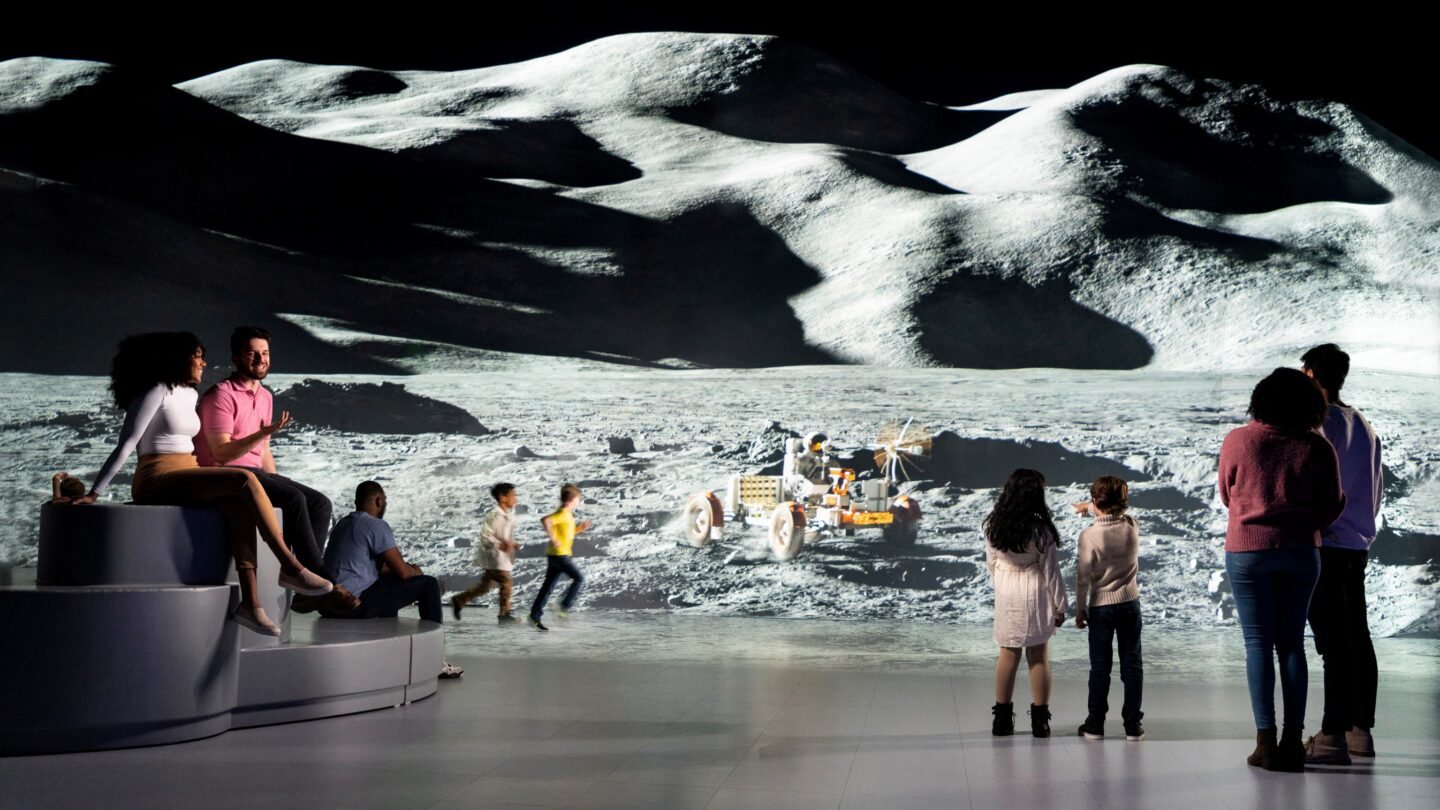Since opening last summer, the immersive theater experience known as the Illuminarium has become a fixture on the Atlanta BeltLine. Using 4k interactive projections, 360-degree audio, and in-floor vibrations, the Illuminarium experience aims to transport people to another world. In the past, these worlds have included an African safari and a deep dive into the art of Georgia O’Keeffe. But now, the Illuminarium is leaving our planet and exploring the great unknown with their newest offering, “Space.”
Melissa Graff is a creative director and a visual effects supervisor at Illuminarium. She joined “City Lights” senior producer Kim Drobes via Zoom to shed some starlight on their new trip through the galaxy.
Interview highlights:
An all-senses marvel among the heavens:
“It’s not a science show, and it’s not a planetarium show – it’s so much more fun and so much more immersive than that. It really gives you that experience that I think a lot of us wanted when we were a kid, and you dream of growing up and being an astronaut,” said Graff. “I mean, who didn’t want that when they were a child? So you come in, and we have a small first room where you get to actually blast off in a rocket ship and go into outer space. So you start on Earth, and then you’re floating amongst the stars, and that’s something that these days you can’t do unless maybe you’re a billionaire. So it democratizes that experience for everyone else.”
“You get to interact with the Kuiper Belt rocks under your feet; you break them apart. You can send stars shooting across the floor below you. You can light up galaxies that are distant below your feet. There’s also a scent system in there – so, I don’t know if anyone knows what space smells like, but it’s a bit metallic,” Graff explained. “Everyone knows there’s no real sound in space, but we do have some amazing recognizable songs like ‘Fly Me to the Moon’ by Frank Sinatra. We also have some composed music, and then we actually use some audio frequency from NASA, so the scene where you go around and look at all the planets, of course, you can actually hear the frequencies that were recorded.”
On Illuminarium’s groundbreaking feats of visual technology:
“It’s the scale of it that’s such a challenge,” said Graff. “It’s about 20 times the size of 4k footage. So I think we calculated that it would take something like over nine million hours to render every single frame that you see in there because of 22-foot-high ceilings, and it’s just such a big space, and we wanted it to be as realistic as possible. So rather than relying on game engine technology, which a lot of other immersive experiences do, we really wanted this to be really, really high-end – to the point where some people have actually come up and asked if we were able to film on the moon, which of course we didn’t do. But that’s one of the highest compliments we can possibly get, is when people don’t understand how we could have possibly pulled this off because it looks so real.”
“The planets were originally still frames that we got from NASA that we were able to breathe life into, add motion to, but we do also have a scene where you’re on the surface of the moon, and we have a bit of a time-lapse effect. And then we bring you to the future, and there’s a moon city, which is based on what people think a colonization of the moon might look like. So that part is potentially science fiction, but also somewhat in the realm of where science could take us, not that far away.”
The Illuminarium’s new immersive exhibit “Space: A Journey to the Moon & Beyond” is open now. Tickets and more information are available at www.illuminarium.com/atlanta/space/.









